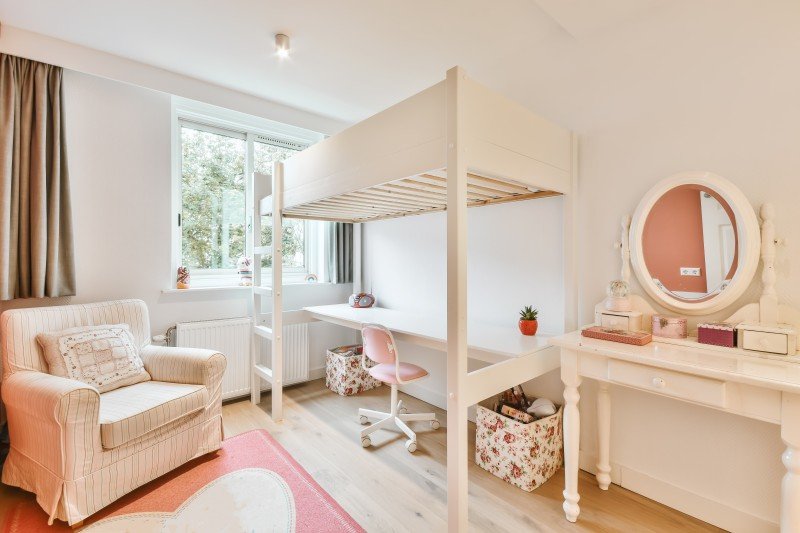Exploring Bunk Beds: A Comprehensive Guide
Bunk beds have long been a staple in kids's bedrooms, dorms, and even homes with minimal space. www.bunkbedsstore.top do they offer a practical sleeping service, but they also create a fun and imaginative environment for children and a great space-saver for adults and households. This post will check out whatever you need to understand about bunk beds, from types and products to security pointers and purchasing guidance.
Tabulation
- Kinds Of Bunk Beds
- Standard Bunk Beds
- Loft Beds
- Triple Bunk Beds
- L-Shaped Bunk Beds
- Material Options
- Wood
- Metal
- Security Considerations
- Purchasing Guide
- Frequently asked questions
Kinds Of Bunk Beds
Bunk beds are available in numerous styles to fit different requirements and choices. Here's a breakdown of the most common types:
Conventional Bunk Beds
Standard bunks usually feature two beds stacked vertically on top of one another. These beds are ideal for brother or sisters sharing a space or for making the most of sleeping space in guest spaces.
Loft Beds
Loft beds stand similarly to traditional bunk beds but do not have a lower sleeping area. Rather, they often integrate a desk or seating area beneath, making them a great choice for little spaces needing multifunctionality.
Triple Bunk Beds
Triple bunk beds are designed for three occupants, with beds stacked in a three-tier configuration. These are less typical however can be a fun service for large households or slumber parties.
L-Shaped Bunk Beds
With one bed placed horizontally and the other vertically, L-shaped bunk beds are frequently geared up with extra features such as desks or storage drawers and can complement corner spaces in a room.
Comparison of Bunk Bed Types
| Bed Type | Ideal Use | Description |
|---|---|---|
| Standard | Shared bedrooms or guest spaces | Two beds stacked vertically |
| Loft | Small rooms requiring multi-purpose space | Upper bed with open space underneath |
| Triple | Large families or sleepovers | 3 beds stacked vertically |
| L-Shaped | Corner or flexible spaces | A combination of vertical and horizontal beds |
Material Options
Bunk beds are produced from numerous materials, with wood and metal being the most common. Each material has its pros and cons.
Wood
- Durability: Generally robust and can endure years of usage.
- Visual Appeal: Offers a classic look that can mix with different decorations.
- Weight Capacity: Typically sturdier; can support much heavier weights.
- Disadvantages: May be more expensive than metal alternatives and can be vulnerable to scratches.
Metal
- Toughness: Generally light-weight and easy to move but still tough.
- Modern Design: Often is available in streamlined designs, making it appealing for modern spaces.
- Economical: Usually cheaper than wood options.
- Drawbacks: Can be cold to the touch in winters and may not have the very same aesthetic appeal for some buyers.
Security Considerations
When it concerns bunk beds, safety can not be neglected. Here are key safety suggestions to keep in mind:
- Guardrails: Ensure that the top bunk has guardrails on both sides to avoid falls.
- Sturdy Construction: Check for a strong construct and strong products to hold up against weight and motion.
- Weight Limit: Adhere to the maker's weight limitation for both the upper and lower bunks.
- Ladder Design: Choose bunks with a safe, easy-to-climb ladder and avoid any sharp edges or rungs.
- Age Restrictions: Most producers recommend that kids under the age of six must not oversleep the upper bunk.
Buying Guide
When shopping for bunk beds, think about the list below aspects to discover the best fit for your requirements:
- Space Availability: Measure the space size and ceiling height, ensuring there is appropriate space for the top bunk.
- Bed Size: Decide in between twin, full, or bigger sizes based on your requirements and the size of the space.
- Style Preference: Consider the overall design of the bedroom to discover an appropriate style.
- Ease of Setup: Look for a bunk bed that is straightforward to put together.
- Budget: Bunk beds can be found in different cost ranges, so determine a budget plan before starting your search.
Frequently asked questions
1. What is the recommended age for children to sleep on the top bunk?
Children aged 6 and older are normally advised to sleep on the top bunk to lessen the risk of falls.
2. How can I make my bunk bed more secure?
To improve safety, guarantee guardrails are correctly set up and inspect that the bed is placed on a flat surface. Furthermore, encourage kids to use the ladder carefully.
3. Can I transform a bunk bed into two different beds?
Many bunk beds are developed to be convertible. Check the maker's specifications for convertibility features.
4. What accessories are available for bunk beds?
Common devices include beddings, storage drawers, staircases rather of ladders, and tented canopies for a fun visual appeal.
5. How do I keep my bunk bed?
Routine look for loose screws or structural integrity can help ensure security. Dust the bed frequently and tidy spills quickly to keep the products in good condition.
Bunk beds are versatile and a space-efficient solution for various living scenarios, from children's rooms to visitor accommodations. With lots of designs and products readily available, potential purchasers have a wealth of choices to think about, guaranteeing a mix of usefulness and looks. By focusing on security and following the pointers described in this guide, individuals can discover the best bunk bed that suits their space and way of life, all while developing a pleasurable sleeping environment.

